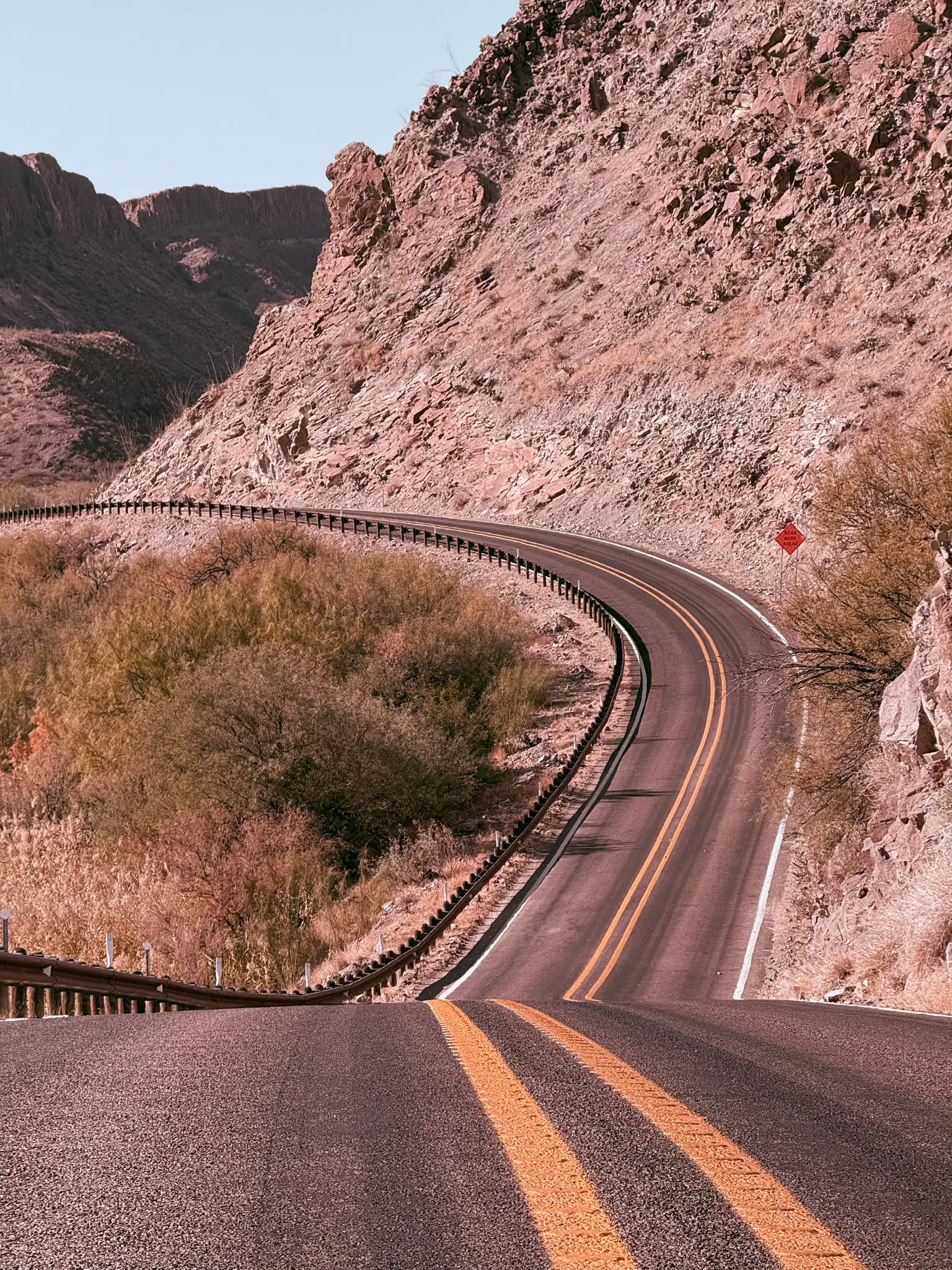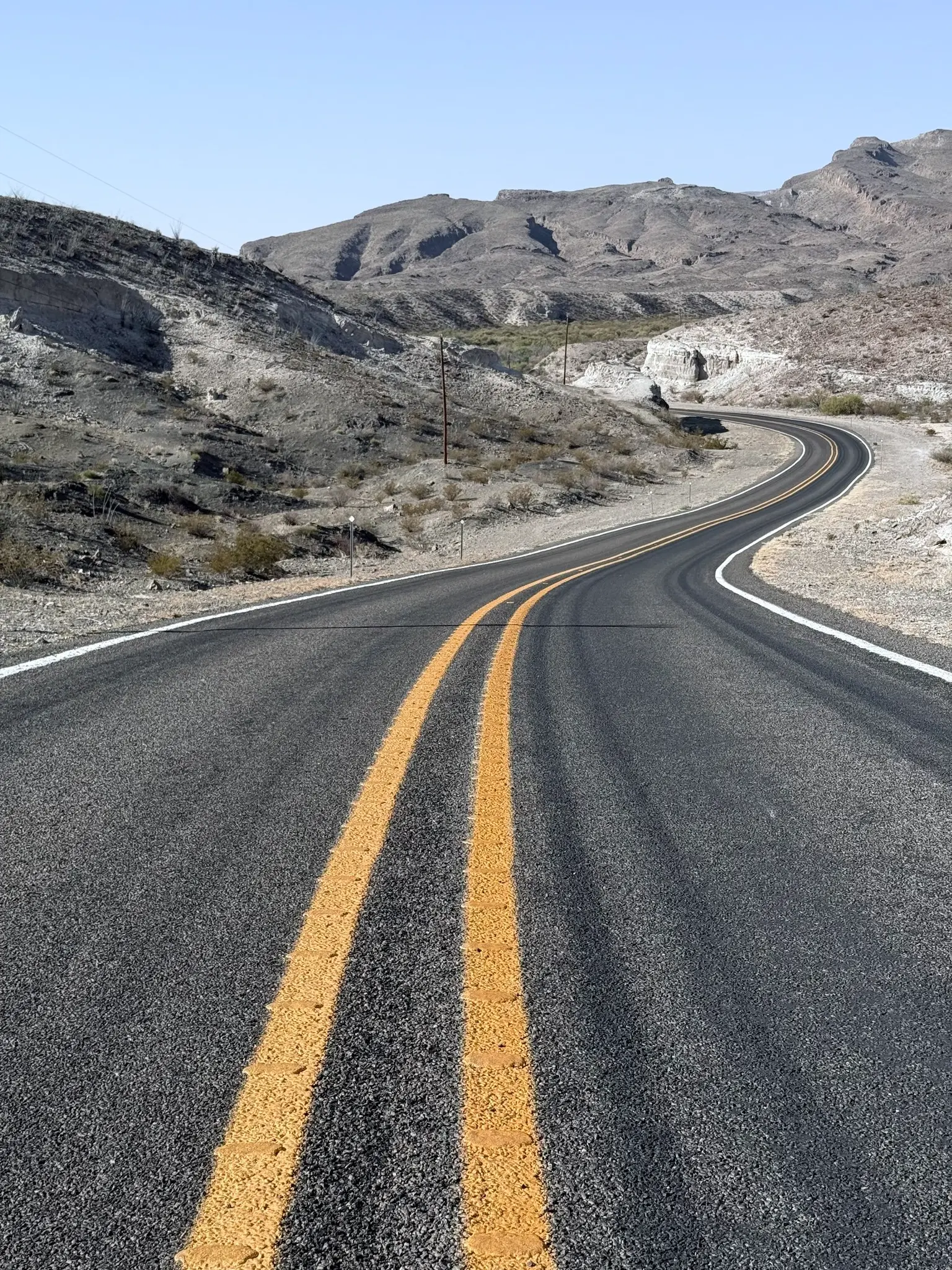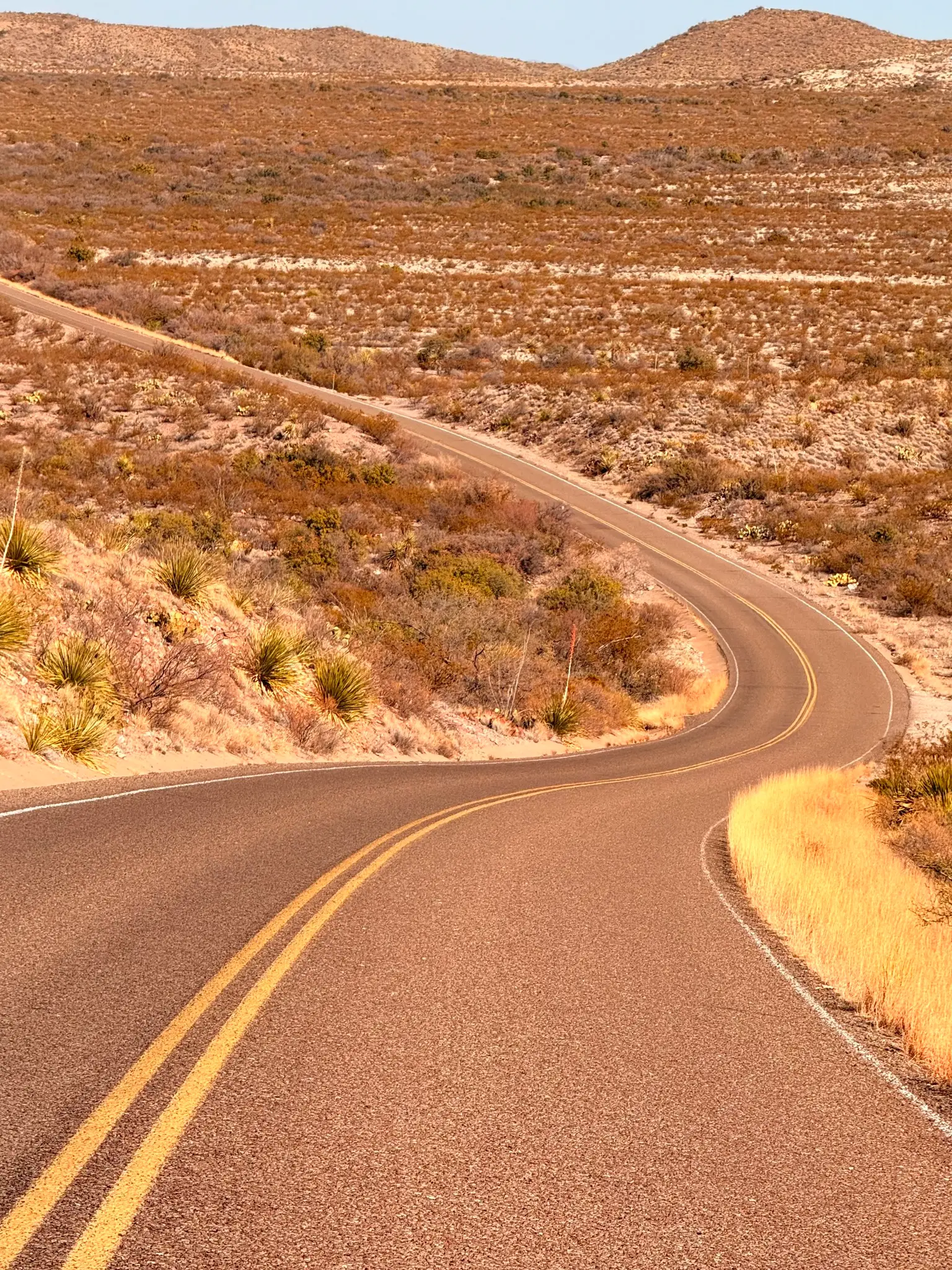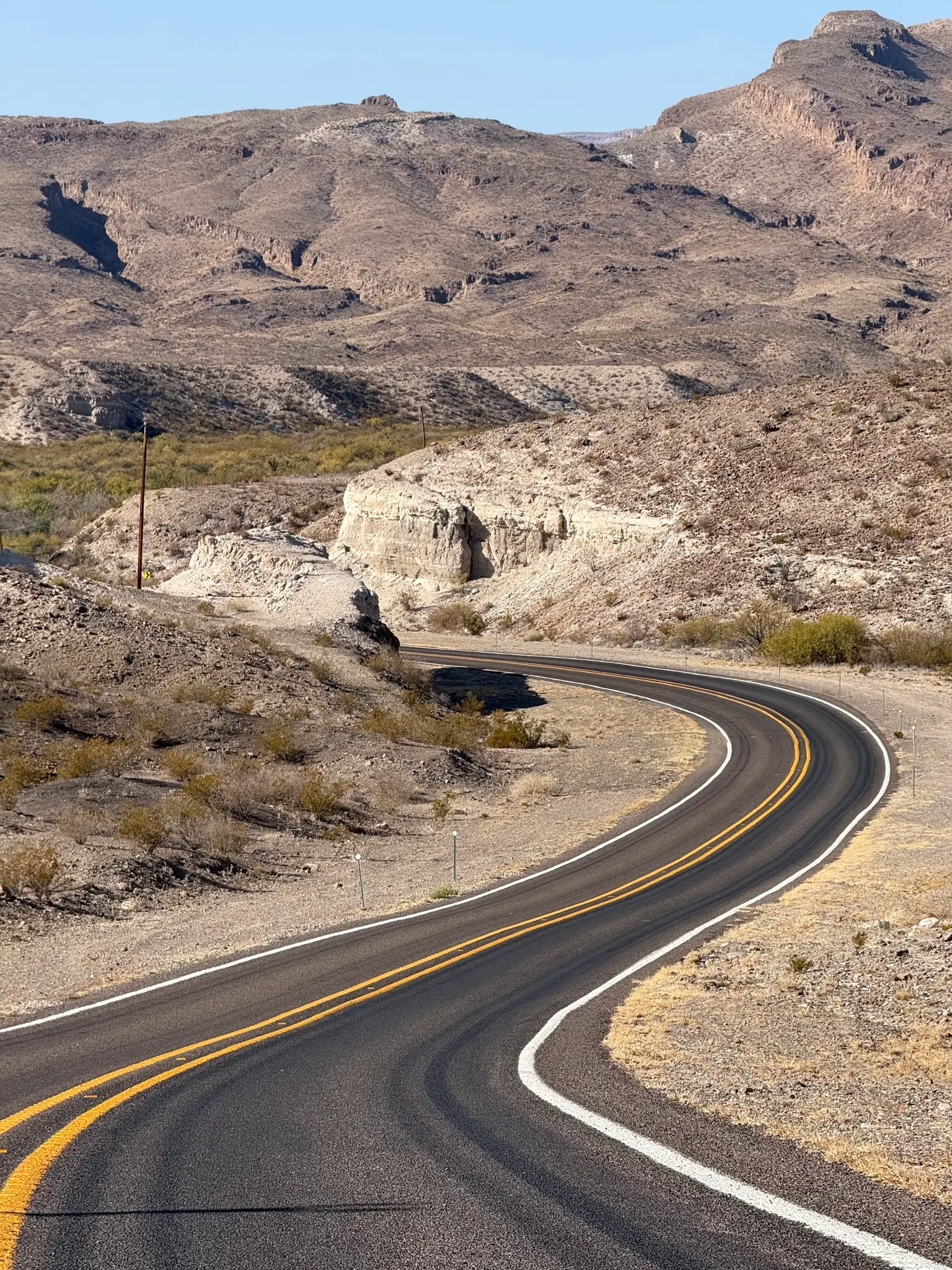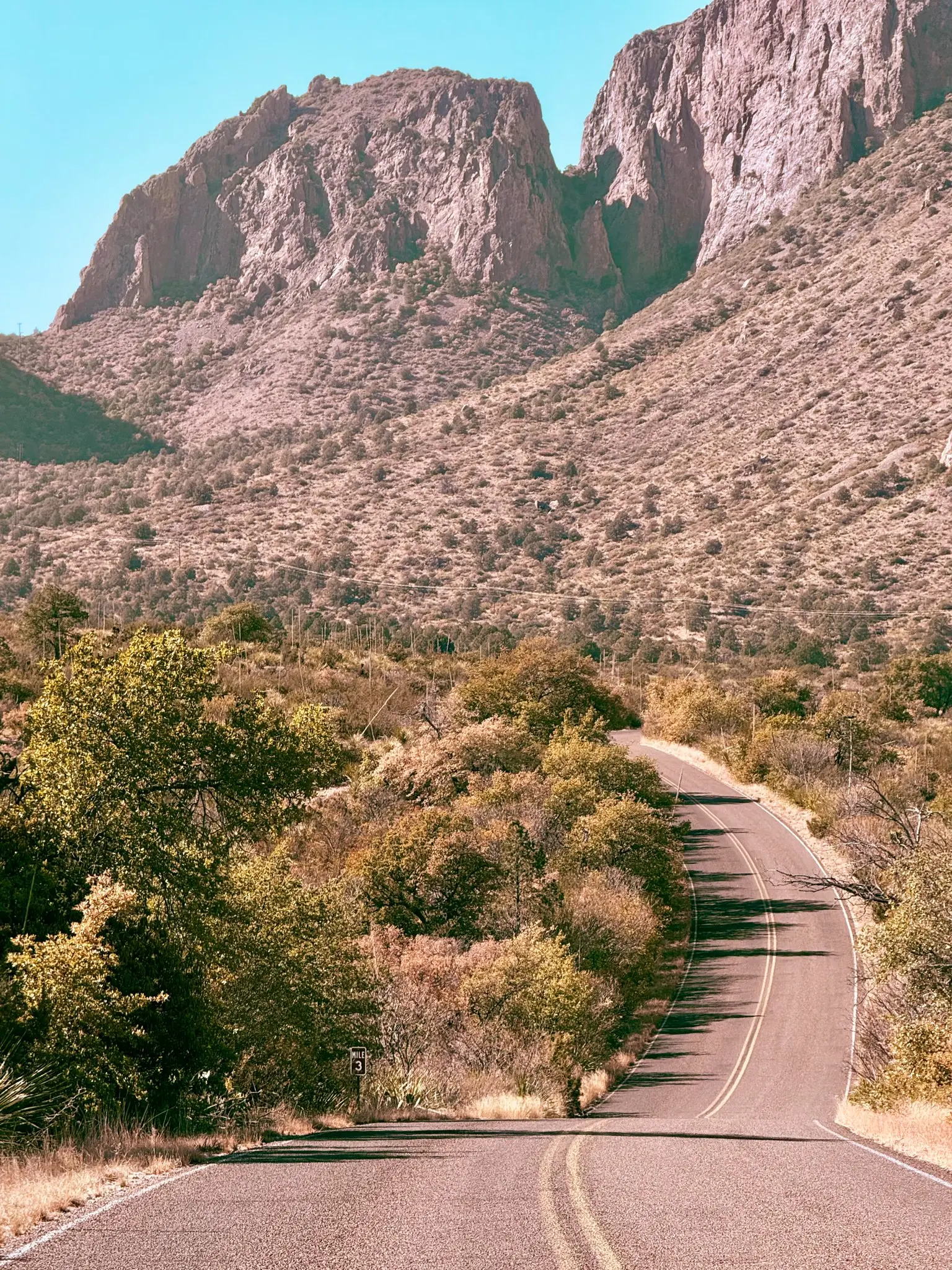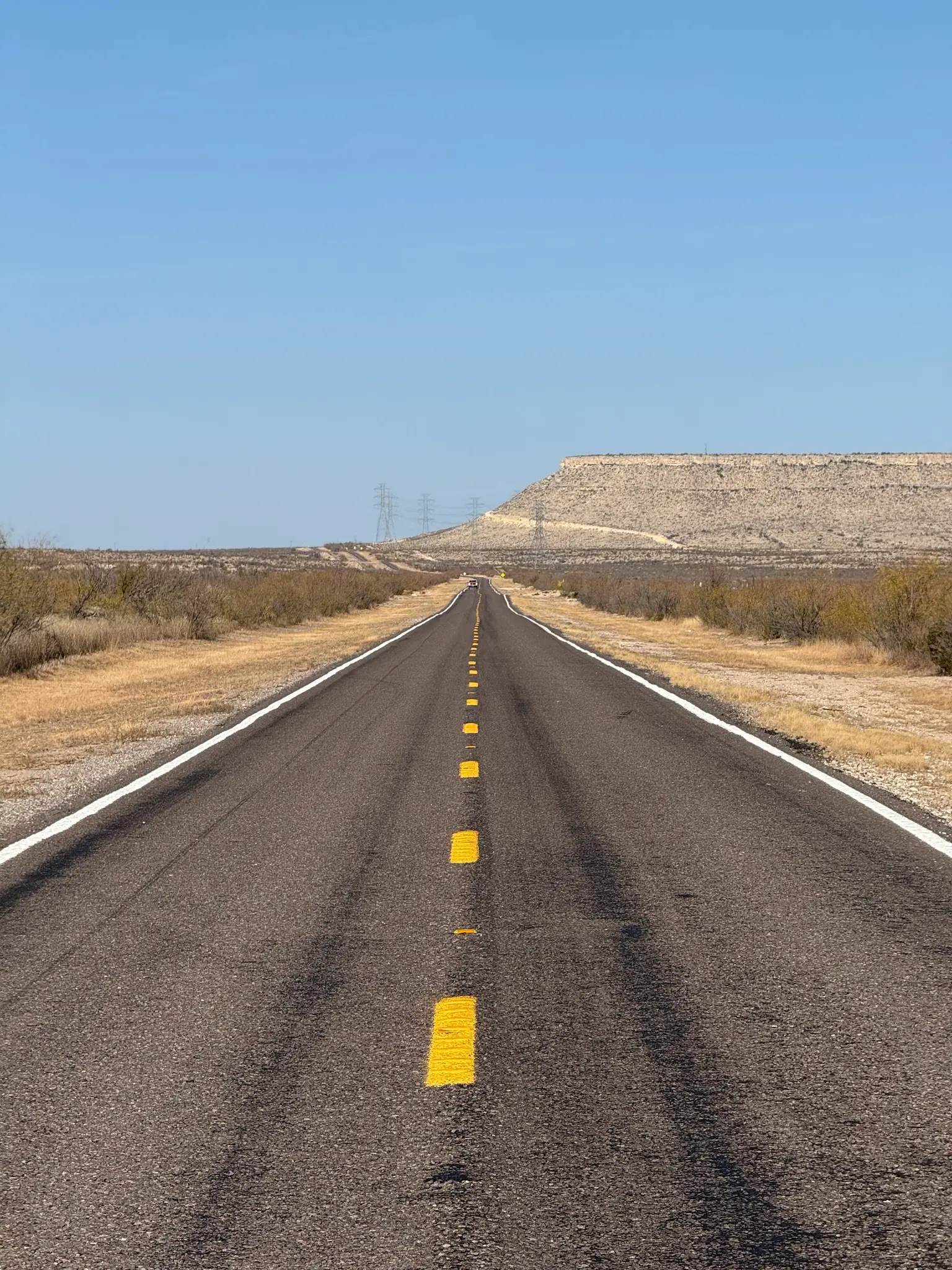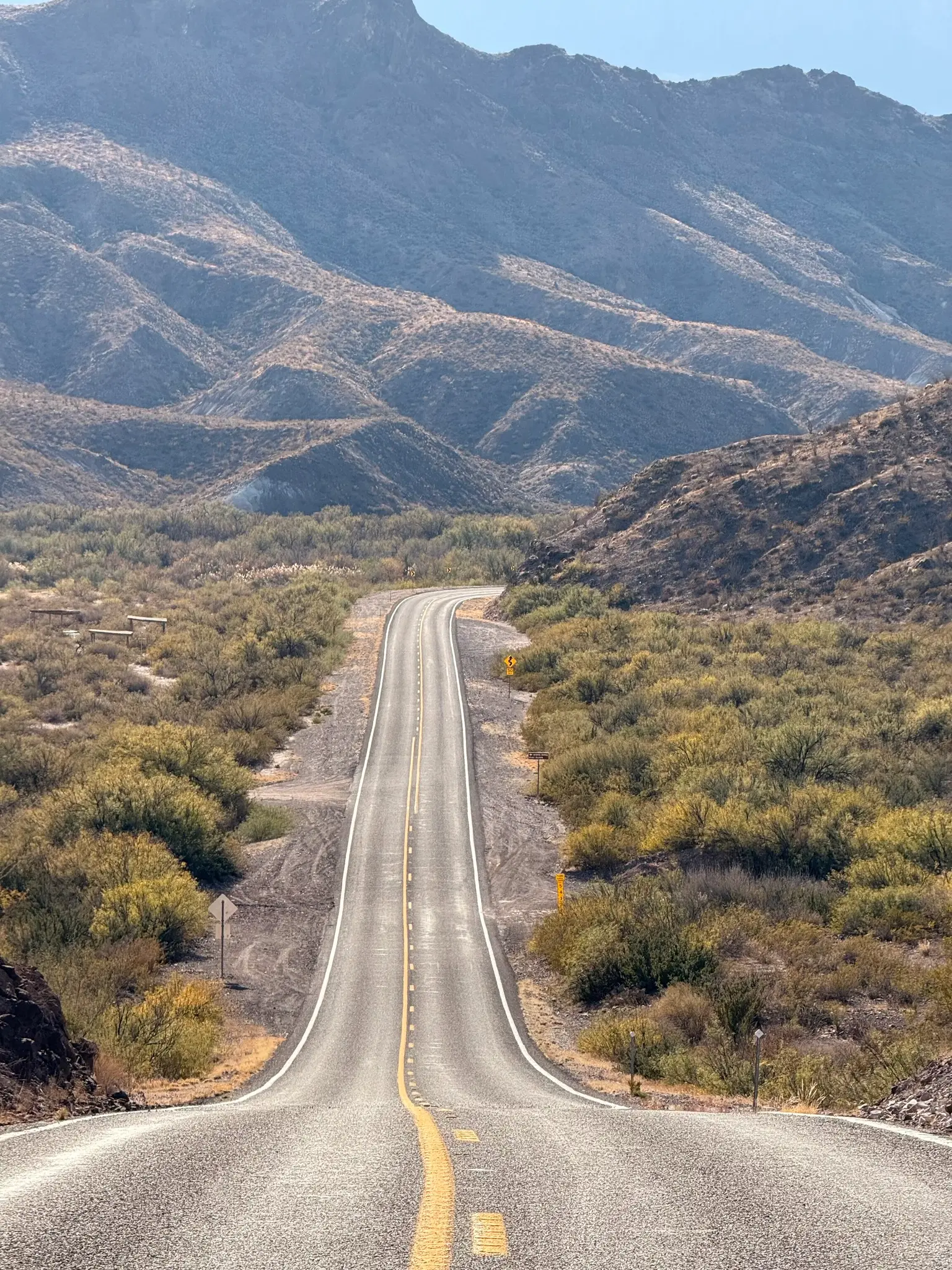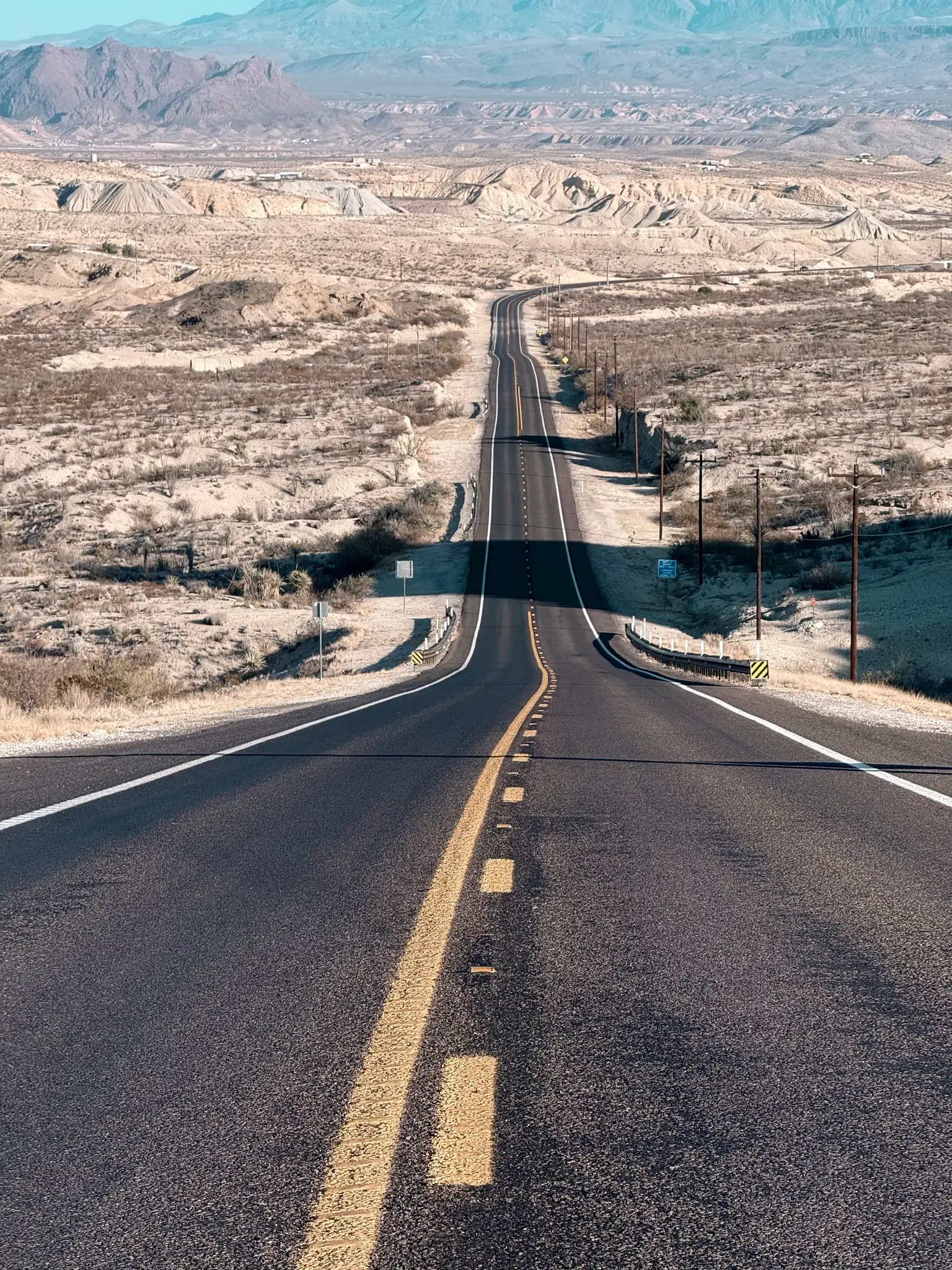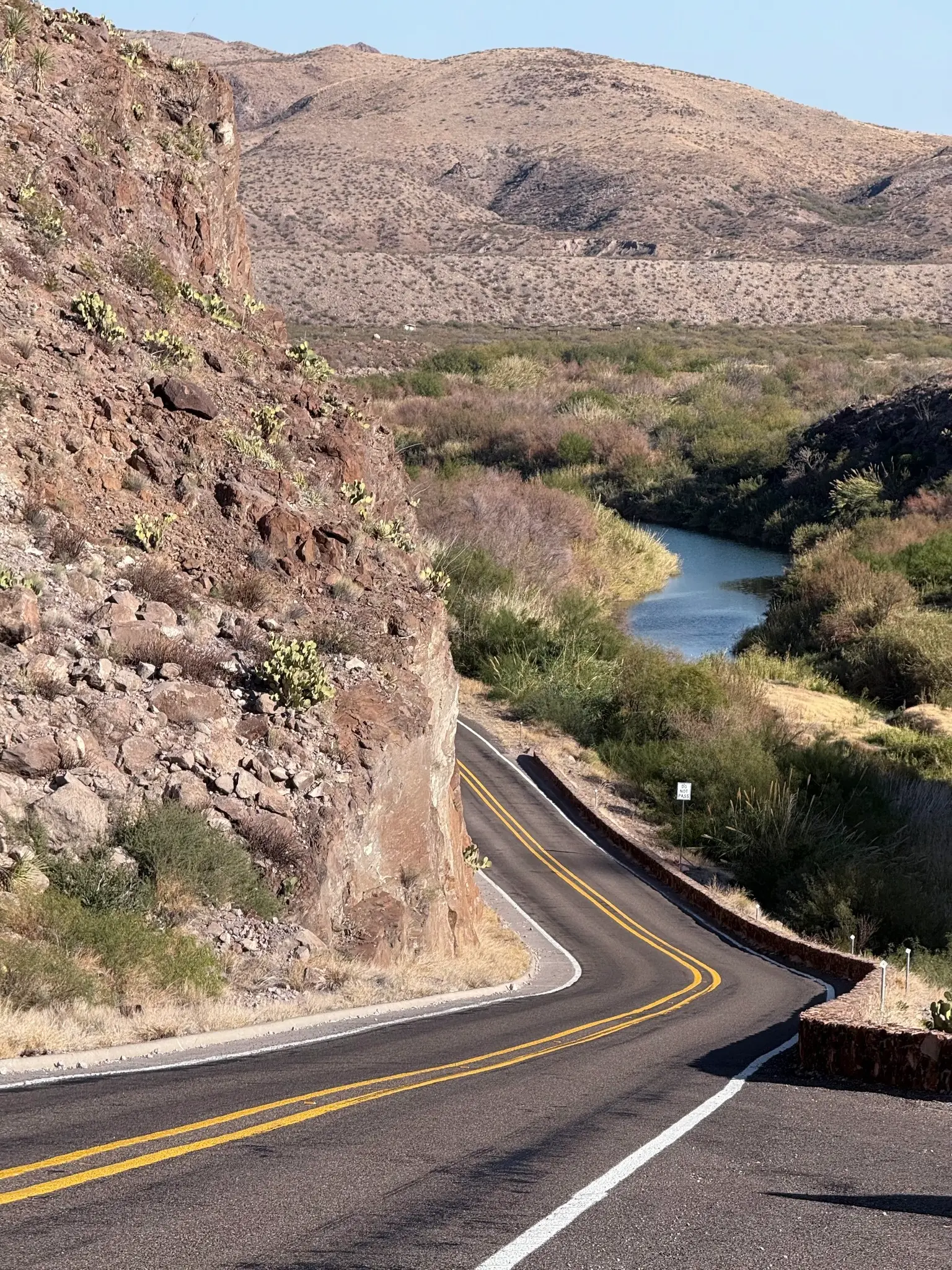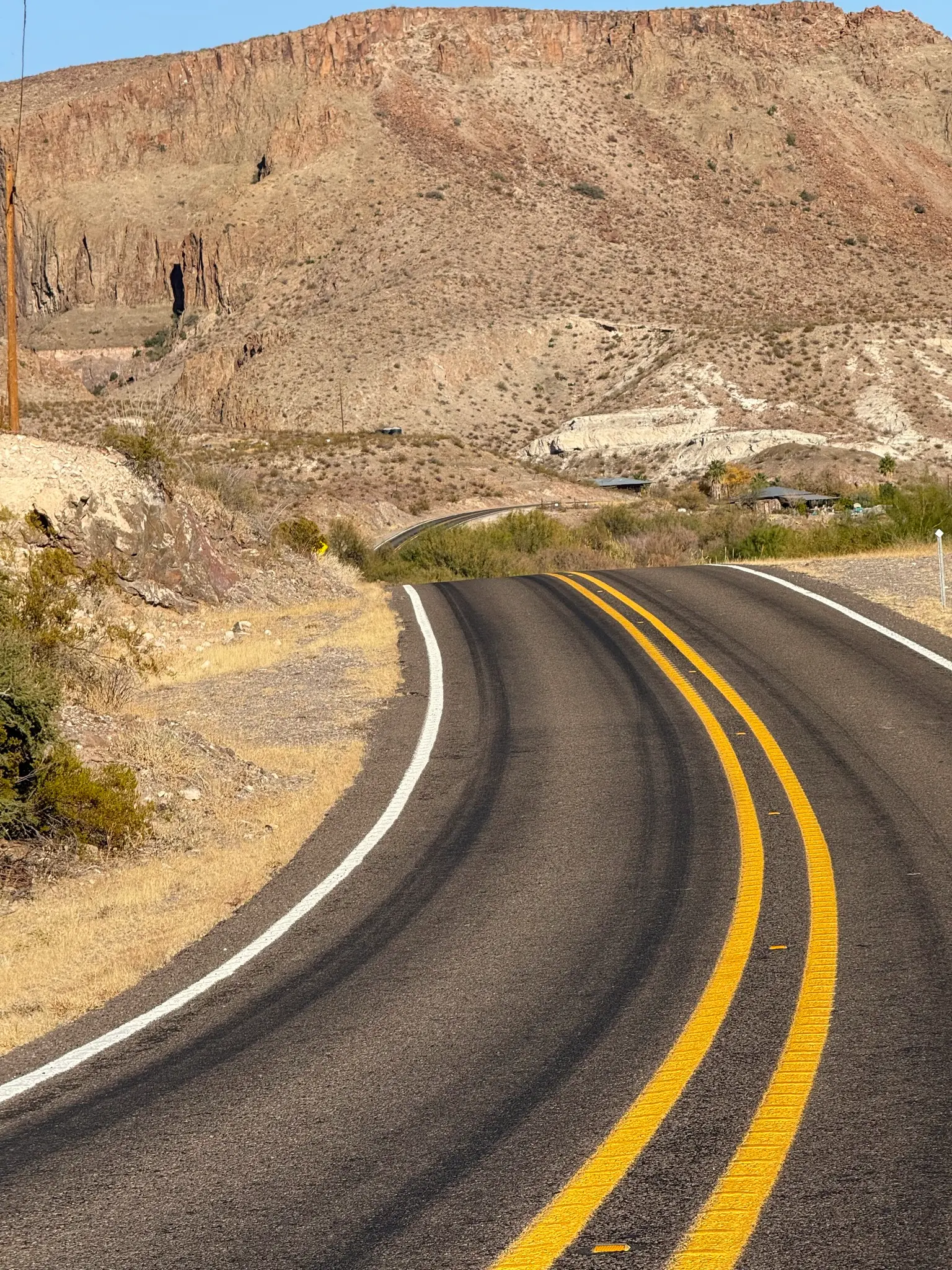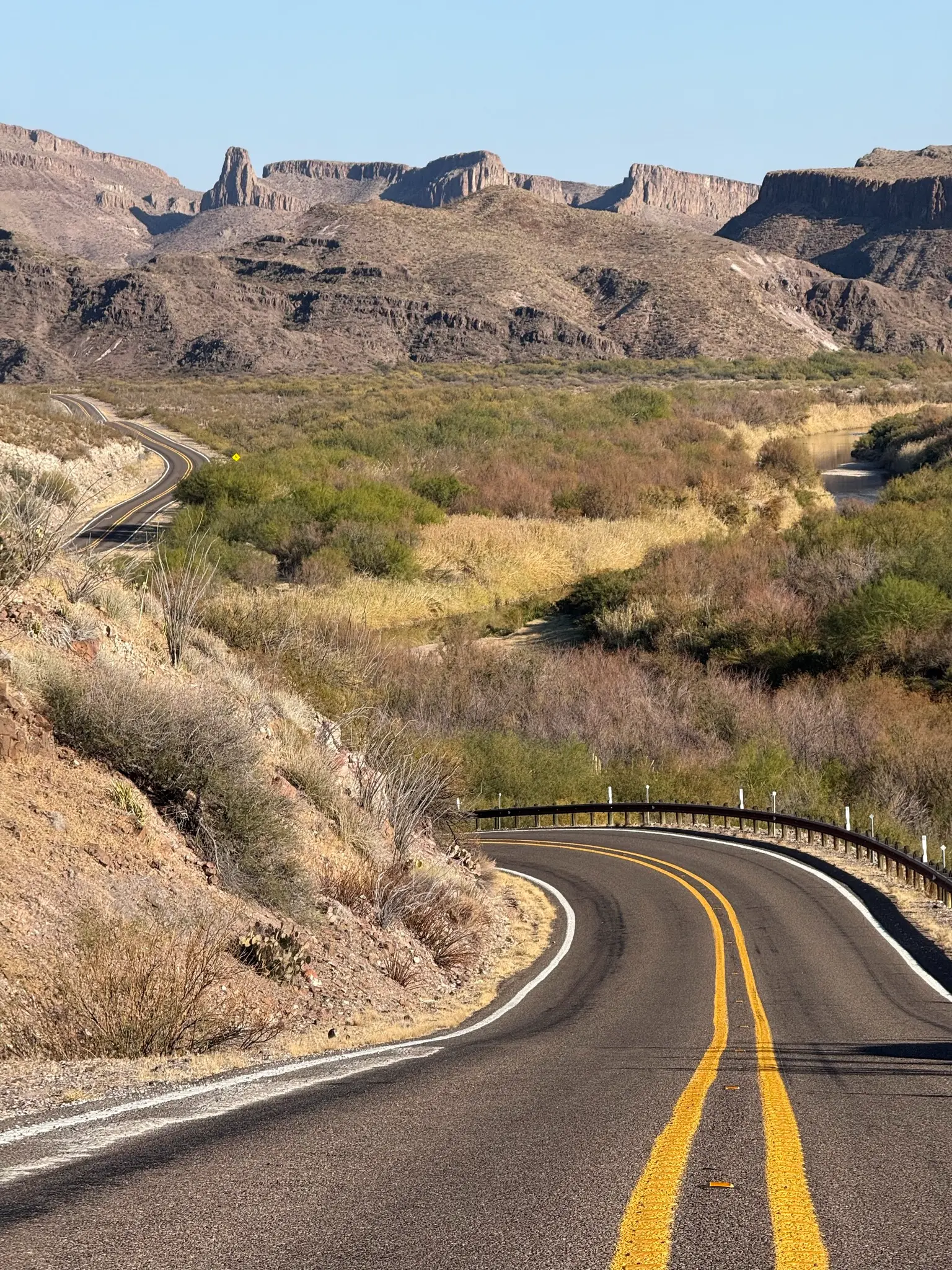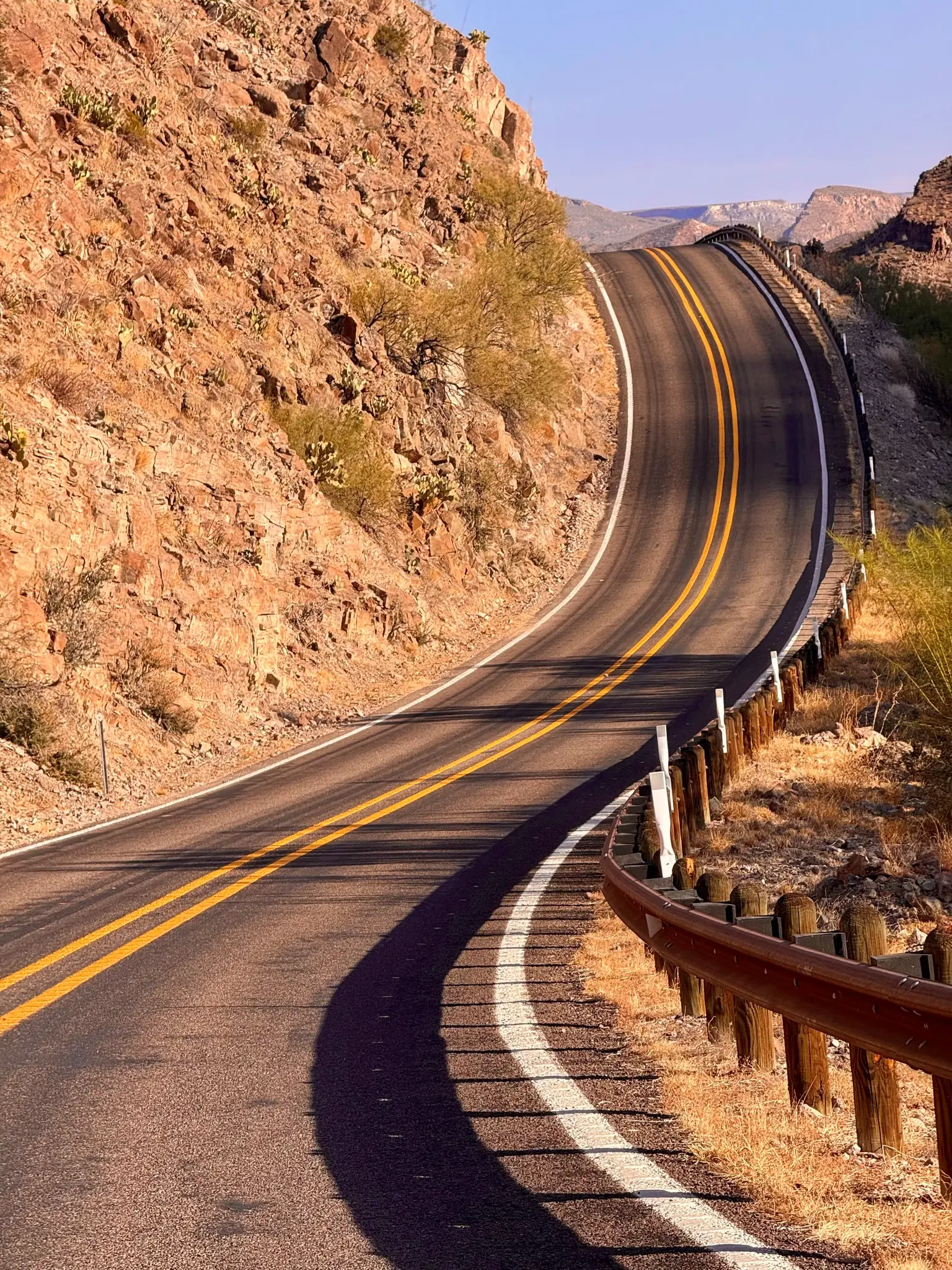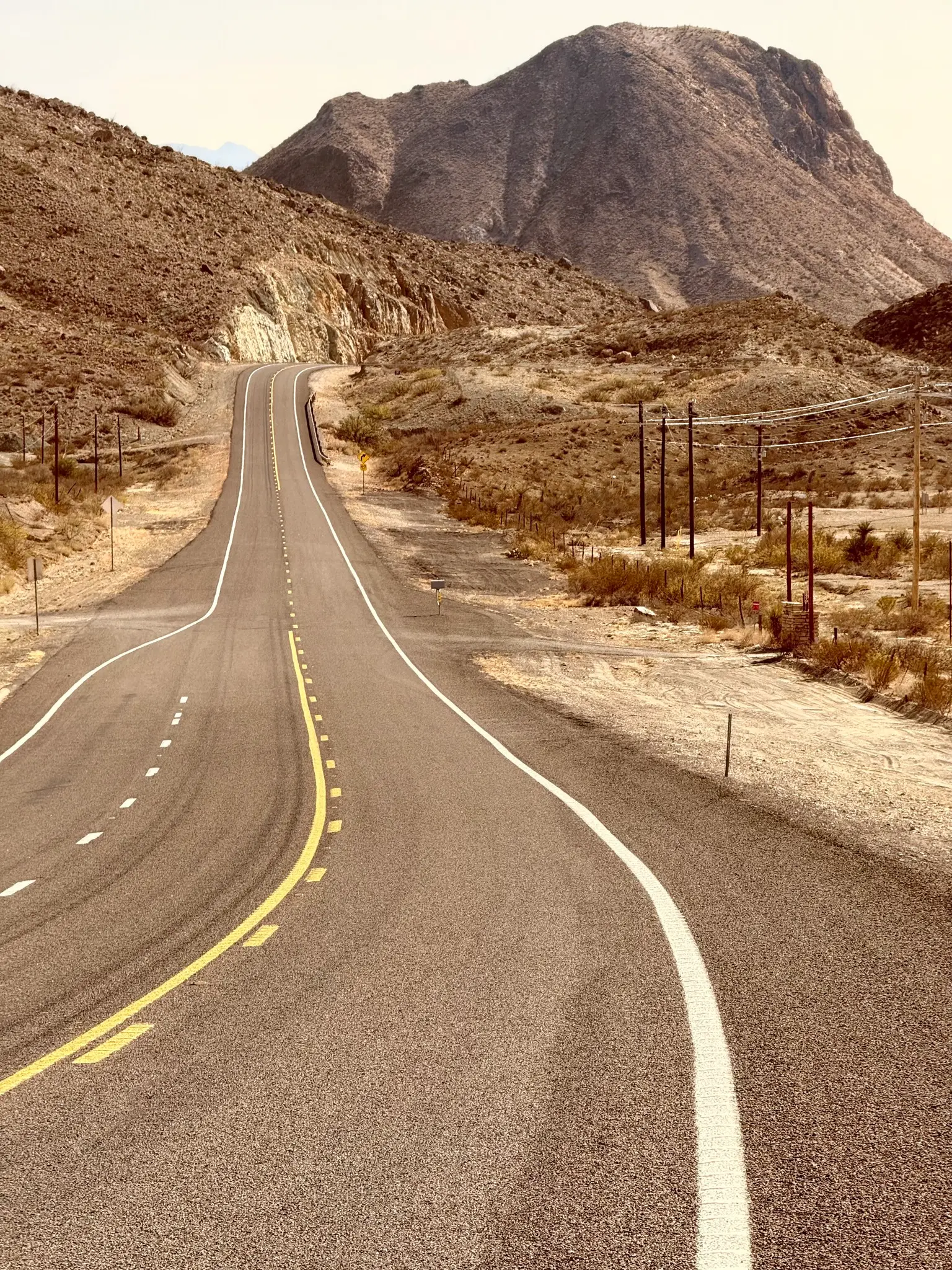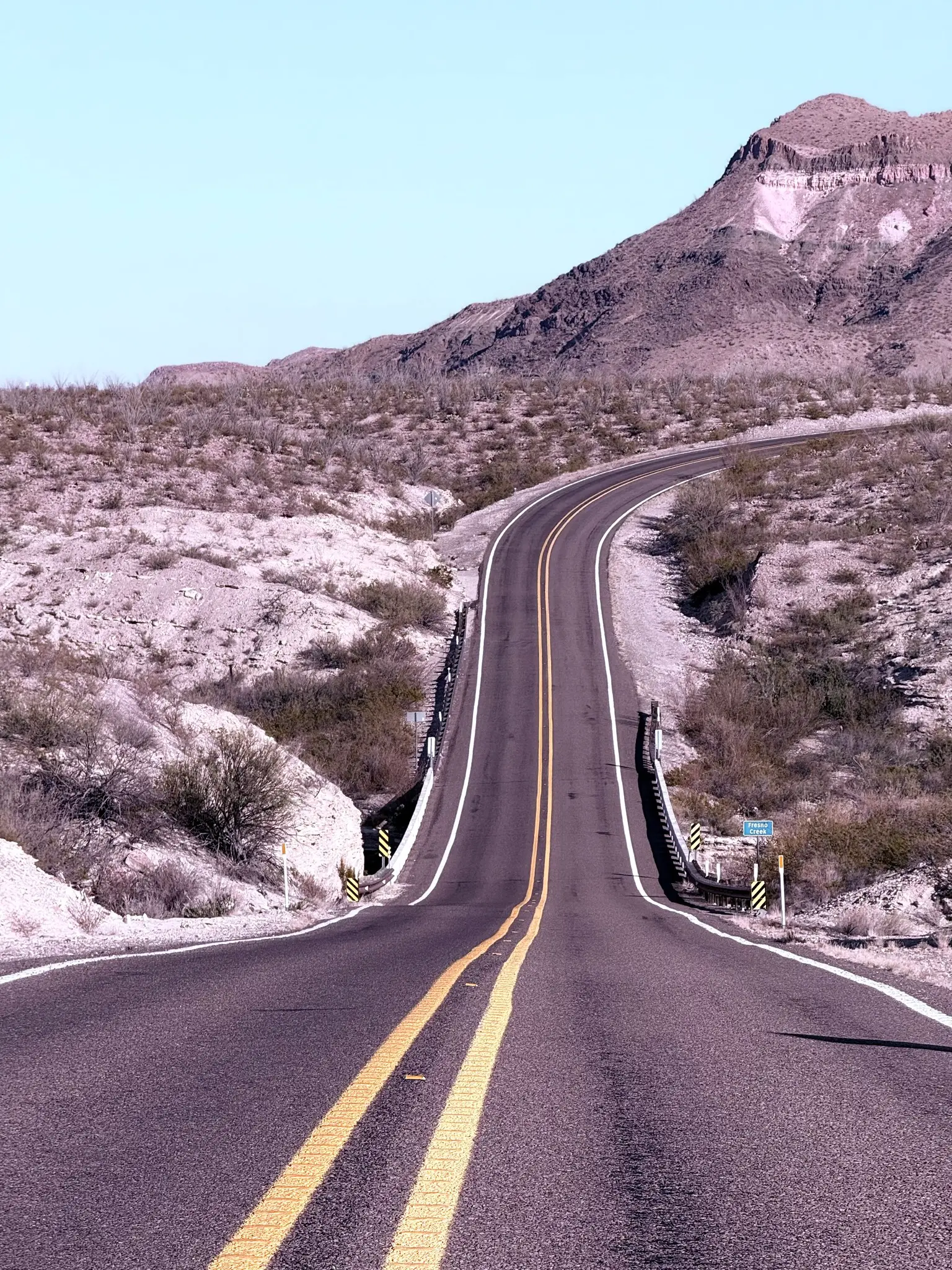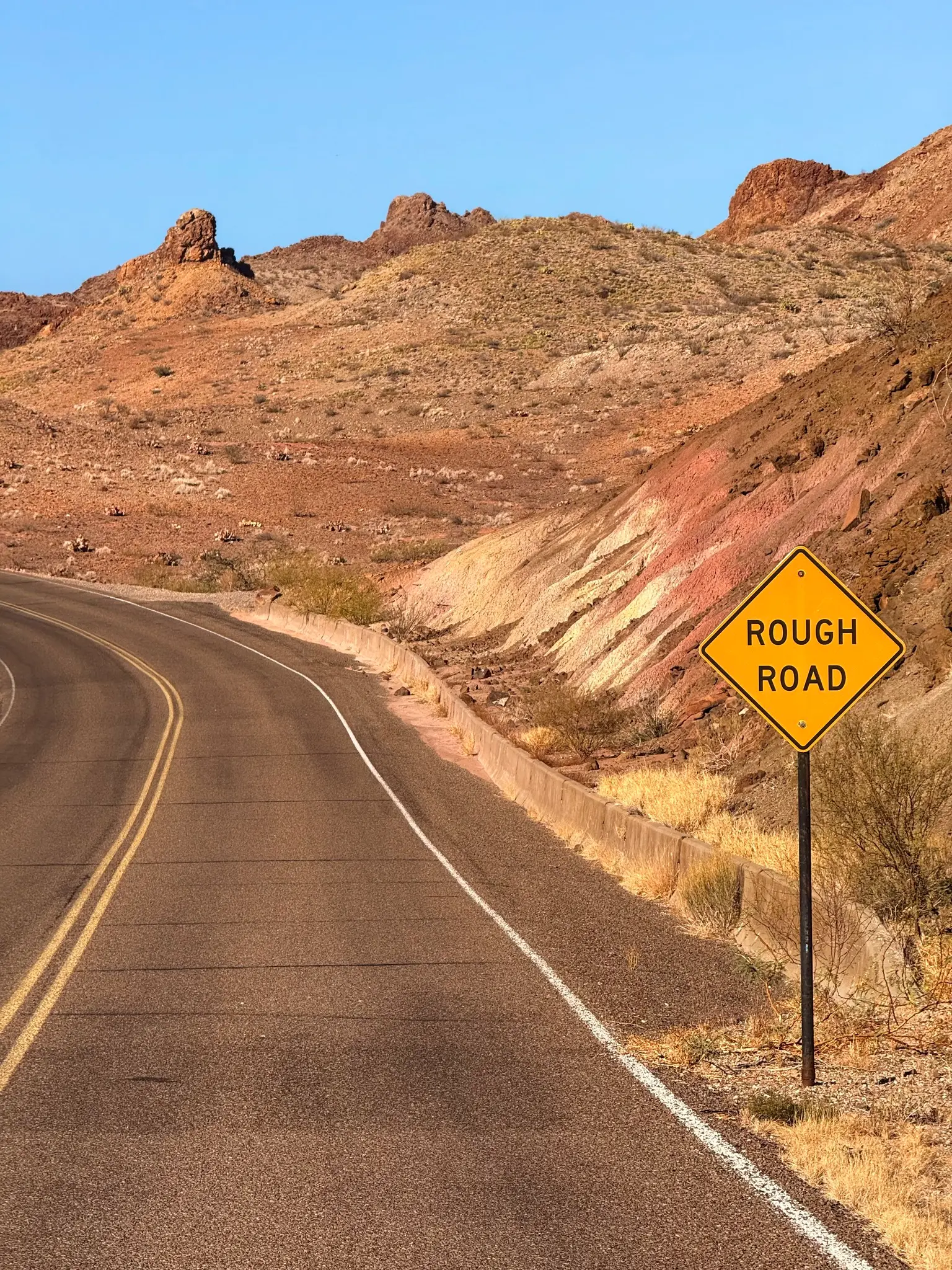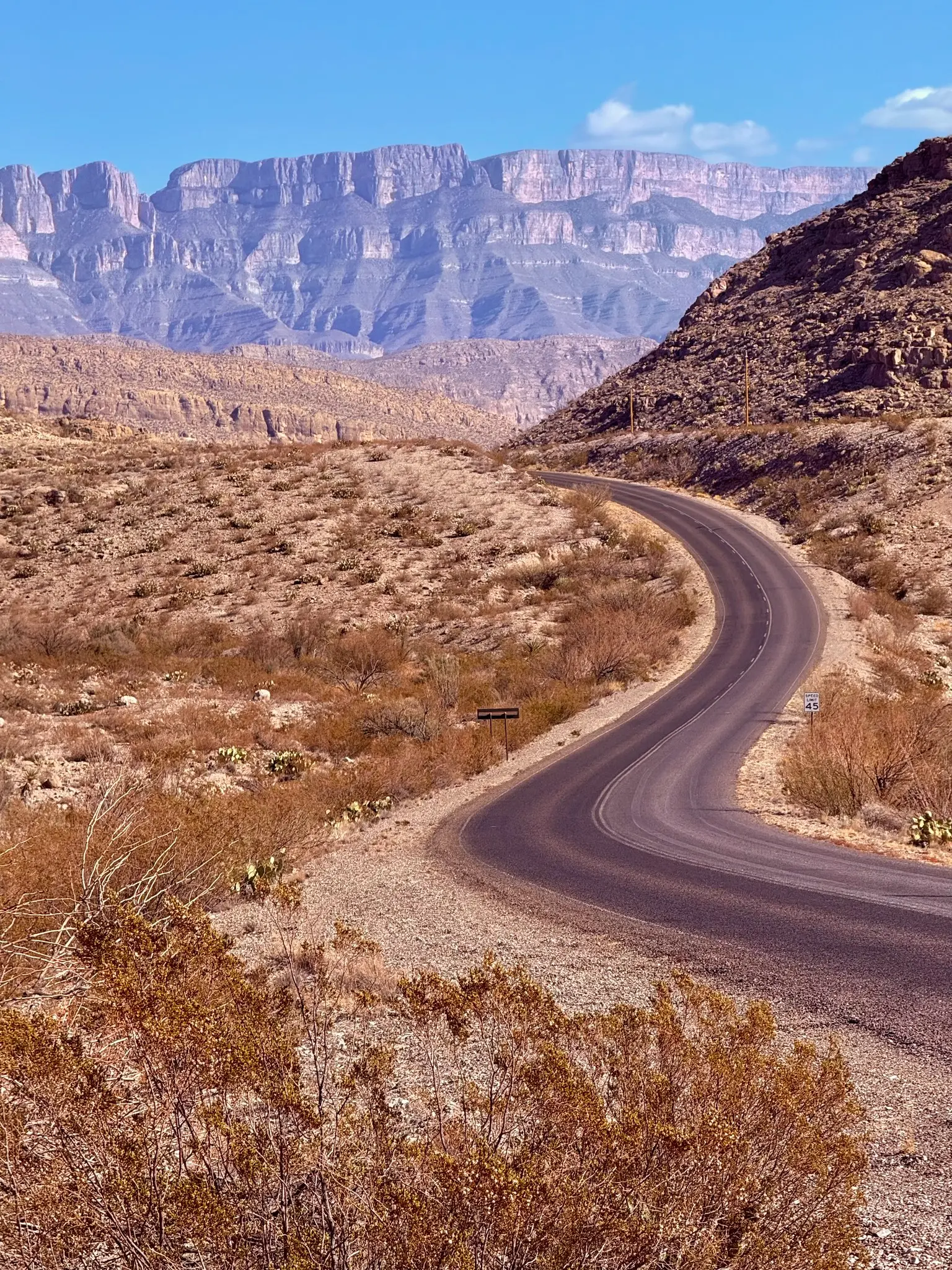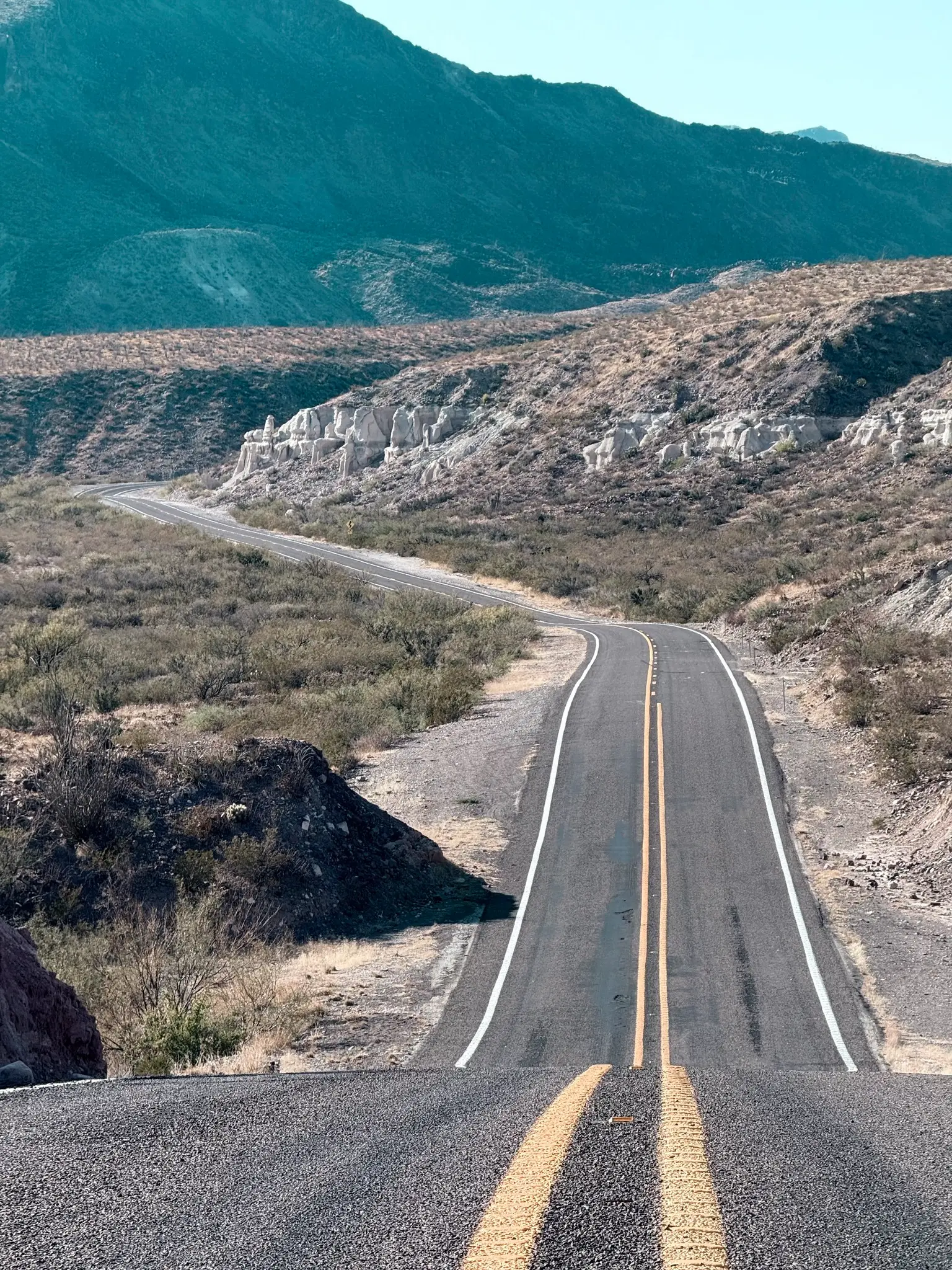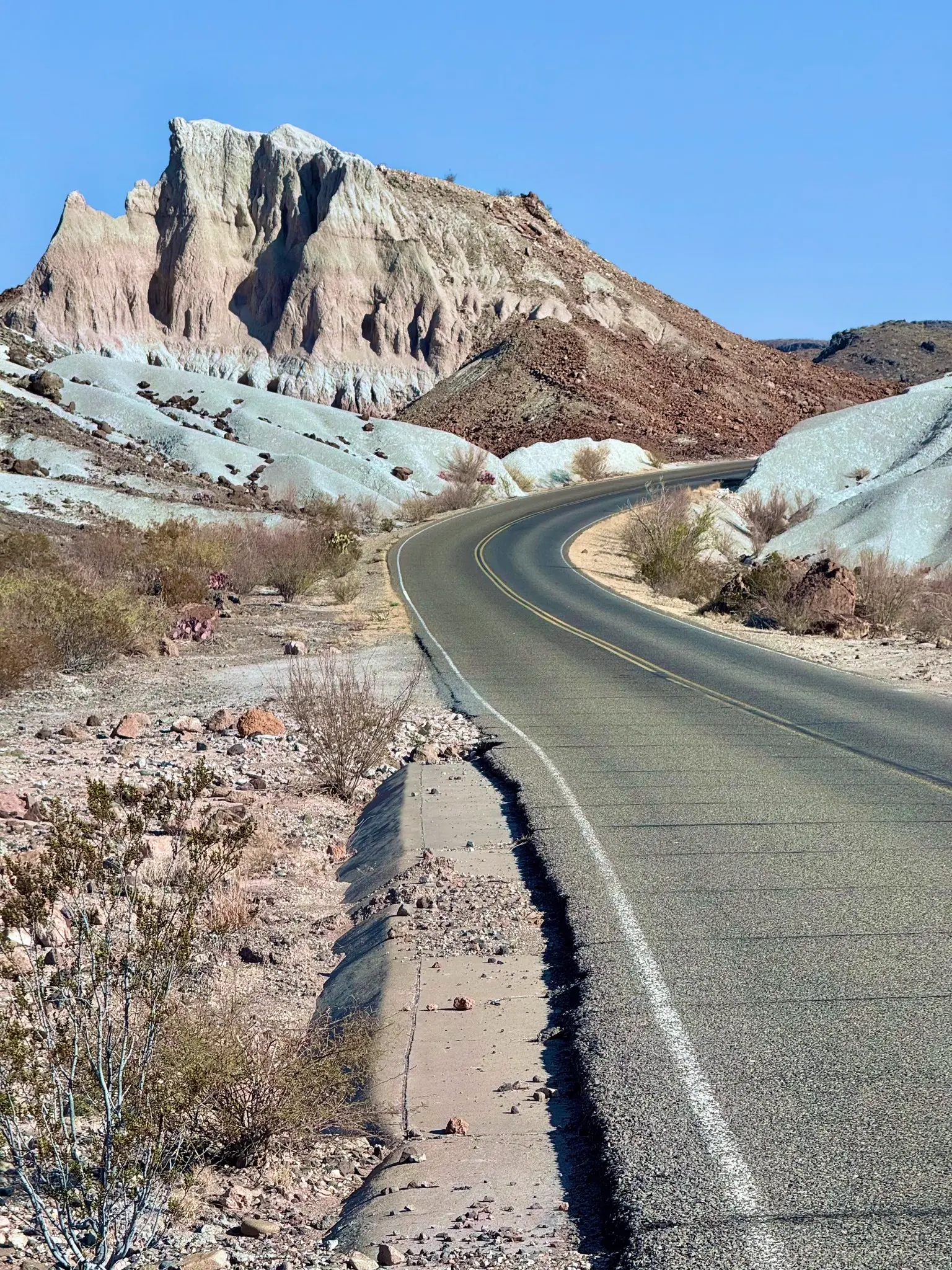There it was—staring back at me, loud and unapologetic.
The open road.
I had gone to Big Bend with a different purpose. I envisioned capturing rugged desert landscapes, the majestic Chisos Mountains, and the moody interplay of light and shadow that only this corner of the world could offer. But when I sat down to edit, my intentions had been hijacked by something deeper, something more unconscious. My camera roll told the real story—image after image of winding asphalt, empty highways, and paths that seemed to stretch endlessly into the horizon.
Could it really be as simple as art reflecting life?
The open road.
I arrived at the Park, slightly after sunrise. The Park felt empty, quiet, and vast like I had the good fortune of owning this natural kingdom all to myself. It was a feeling and mood I’ll never quite forget.
I turned 71 this year. Winter Solstice had come and gone, and with it, I felt a shift—small at first, like a whisper, but growing louder. Life has a way of sending us messages in unexpected ways, and for me, the open road was its language. It speaks of change and movement, of wandering and wondering, of wishes unspoken but not forgotten. As Jack Kerouac once wrote, “Nothing behind me, everything ahead of me, as is ever so on the road.”
The road has always been a powerful metaphor. In its twists and turns, its beginnings and endings, it mirrors our own lives—messy, unpredictable, beautiful. Sometimes straight as an arrow in flight. Other times, more curves, bumps, and detours are too large to count.
On that Winter Solstice, under a sky that felt ancient and infinite, I found myself at a crossroads. My photography, it seems, was trying to tell me what my heart already knew.
The open road isn’t just a place; it’s an invitation. To move forward. To explore. To trust the process of not knowing what lies ahead. Robert Louis Stevenson put it this way: “For my part, I travel not to go anywhere but to go. I travel for travel’s sake. The great affair is to move.”
As I gazed at my images, I wondered if this compulsion to capture roads was my way of acknowledging the rumblings of transformation within me. Maybe I didn’t need a mountain to anchor me, after all. Maybe the road itself—the act of going—was enough.
The road asks questions: Where are you going? What are you searching for? Why are you going so slow? Why is your window rolled down? Why are you alone on this journey? But it also answers: Keep moving, and you’ll find out.
There is something beautifully human about the open road. It’s raw and honest, stripped of pretense. It connects us to the past, present, and future all at once. John Steinbeck understood this when he wrote, “People don’t take trips—trips take people.”
As I stared at my camera roll, I smiled at the irony. I had gone to Big Bend to find one thing but had discovered another. My art had once again reflected my life, shining a light on truths I couldn’t articulate.
I don’t know what lies ahead for me—what this road I’m on will reveal. But I’m ready to trust it. To let it take me. To wander and wonder. And isn’t that the gift of the open road?
It reminds us that the journey itself is the destination.
The open road, as a visual metaphor, is very much to me like photographing doors and windows, is a whispering invitation to freely explore photography and life-unshackled, unfettered, and unmoored.
Click.
Jack
P.S. All images were #shotoniPhone 16 Pro Max, mostly with the 5X les (129mm). I edited them using Photographic Styles to give them the look of how I was feeling at the time of capture.
